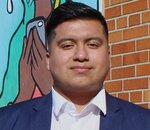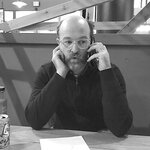By Cam Gordon
Conversations about closed and proposed safety facilities continue to bring disagreement and hope to the southside community.
While the city seeks feedback on proposals for three different facilities, residents and elected officials are raising concerns. One group is poised to release an “autonomous request for proposals” it hopes will inspire new ideas for the 3000 Minnehaha site.
In April, city staff released plans for reopening the old police station at Lake and Minnehaha, and met with area residents to discuss a new smaller Safety Center on East Lake St. as well as the larger facility the city is purchasing for $10 million and renovating for $4 million that will include a headquarters for 3rd precinct police at 2633 Minnehaha Ave.
Two safety centers
On March 27 at Powderhorn Park, Amanda Harrington, the city’s director of community safety design and implementation, began a series of meetings to gather feedback for both the larger Community Safety Center and the Lake Street Community Safety Center.
Meetings were held with South High School students on April 19, with people who identify as Southeast Asian on April 20, and with people who identify as Latino also on the 20th. They are also planned for people who identify as African American on April 25 and with older adults April 26 and May 6.
According to the presentation in March, the Lake St. center will open this summer in a store front on or near Lake St. It will be temporary, intended to serve the residents and businesses in the East Lake St. area between 35W and Hiawatha, and will not have a full-time police presence. The city approved $500,000 in one-time funding for the rental, design, build, and communication of the interim site.
The larger facility at 2633 Minnehaha Ave. is expected to open in early 2025 with a first phase that has yet to be defined. It will include the staff and facilities of a 3rd precinct police station, as well as other community services and resources for the entire 3rd precinct geographic area that is bounded by the Mississippi on the east, the southern city border, I35W to the west and I94 to the north.
New use for old building
On April 8, city staff, led by City Operations Officer Margaret Anderson Kelliher, presented their recommendation that 3000 Minnehaha be reopened to house the Elections and Voter Services Center currently operating in northeast Minneapolis as well as new, yet to be defined, “community space.”
Under the plan, the community space would use the main entrance, and 77% of the existing ground floor space. A new addition would be added to create more space for an election voter service center with warehouse space. When completed, 8,000 square feet of the 34,000-square foot-building will be set aside as “community space.”
Anderson-Kelliher was seeking council concept approval before starting community information sessions. Site clean-up this spring would be followed by community design sessions, and a revised concept plan ready by the end of the year.
Most of the southside council members spoke against approving the design and the council voted 8 to 3 to delay action at least until their April 23 meeting (after the Messenger publication went to print). Ward 8 Council Member Andrea Jenkins voted against the delay along with council members Linea Palmisano and LaTrisha Vetaw.
“The residents I represent,” said Ward 9 Council Member Chavez, “have been very clear about what they want to see, and it is that they want it to be community use.”
“I am very open and want to hear from residents about this concept plan,” said Ward 11 Council Member Emily Koski.
“My support is contingent on community engagement and at least the bare minimum honest conversation with Black, Brown, Indigenous, immigrant, working community members that are most impacted surrounding the 3000 Minnehaha site,” said Ward 12 Council Member Aurin Chowdhury.
“We are elected to make decisions based on the information that we have about our community,” said Jenkins. “A voting center serves the entire city of Minneapolis. It is a community use. It is a function of our responsibility to ensure that the residents have an opportunity to engage in democracy. To me it seems like a really good solution.”
President Elliott Payne, a Northeast resident, offered an idea for the shorter term. “I think it would be a good idea to do truth and reconciliation within the [old] 3rd precinct [building],” said Payne. Calling it a “temple of trauma,” he said that it “would be powerful to host community conversations in that space.”
At the same meeting, the Longfellow Community Council (LCC) shared community feedback it had gathered on the proposal. They found that 94 percent of the 118 people who participated in their survey and meeting process wanted the use to be determined by the community. Only 6 percent wanted it used for police or a voter center.
Their report concluded, “Based on our small sampling, the community feels their opinions aren’t heard, considered, or acted upon by the city. The community would like a true engagement effort to be conducted and for the feedback from that engagement to determine what happens at 3000 Minnehaha Ave.”
“The city has not engaged the residents to ask about the reuse of the building,” LCC Communications Specialist Andrea Tritschler told the council on April 8. “This feedback is representative of what we have been hearing since 2022.”
An Autonomous Request for Proposals
Other efforts to do something different on the site continue. This includes the proposal spearheaded by Frederick Brathwaite to build a Black Cultural Center, with a museum, theater, banquet center, basketball court and more. (See the March edition of the Messenger for more information.)
One group, led by Confluence Studio, announced that will be launching an international Autonomous Request for Proposals (A-RFP) to “re-imagine the Third Precinct complex from the ground up” in May.
Started in March of 2020 by two Powderhorn neighborhood residents, Sam Gould and Duaba Unenra, the A-RFP idea was developed through meetings that began in the parking lot of the old police station and have continued since on a monthly basis at either at the New City Center for Healing Justice at 3104 16th Ave. or Mirror Lab at 34th and Cedar.
“The city keeps telling us what we want, without giving us the opportunity to authentically listen, and engage with what neighbors actually want and are desiring,” said Gould. “It’s always this kind of cat and mouse game of just giving us little bits, if that at all. So, what I hope this autonomous RFP can do is set up space for critical dreaming. It’s both practical, but at the same time, it allows us to imagine different ways of self-governing and collaborating as neighbors.”
The request will go out to three groups: professional, neighbor and youth. Professionals are defined as any person or group living outside the Minneapolis area with a focus on architecture, city planning, landscape design, artistic and/or critical practices. Professionals living in the neighborhood are invited to apply for either the professional or neighborhood track.
Submissions from all three tracks will be evaluated by people who live in the 3rd precinct, and the finalists from each track will then be asked to create one shared proposal to be presented and exhibited in late 2024 or early 2025.
“We’re going to get out as far and wide as possible, both within the neighborhood in the city, but then through connections with different art centers around the country in the world, and architecture programs, design programs, different groups who are doing kind of critical spatial justice work like this in other cities,” said Gould. “So hopefully, it gets to be a really robust conversation.”
Gould thinks that too much discussion now is on “what’s supposed to go into building next,” and not enough is about the larger history of policing in Minneapolis. He recognizes the significance of the killing of George Floyd, but thinks more needs to be acknowledged.
“It’s not just that moment,” said Gould. “That’s one of the things that I keep coming back to again, and again, and especially in the beginning with those listening sessions last year, the city just kept talking about, well, this thing happened. It’s not just this thing. That was the eruption from decades and decades of violence.”
He added, “Historically, that building was just a cesspool.” He is convinced that problem officers were placed there and that working there “was like an infectious social disease. It just turned you into a terrible person.”
Gould believes there is a history of a “culture of racialized abuse” that includes “extra judicial racialized abuse that would happen inside that building.” He described reports he has received of “humiliating, forceful, violent body cavity searches” that he said were “basically ritualized specifically with Black men” who were arrested and taken there.
“This is a historical moment and historical event we’re living in,” said Gould. “Let’s create a space where we can actually dream big. And see that this is an opportunity to do something we haven’t done before.”
SURVEY
The City of Minneapolis is requesting your feedback about the proposed Community Safety Center. Complete this survey by May 24th to share your thoughts:




Comments
No comments on this item Please log in to comment by clicking here